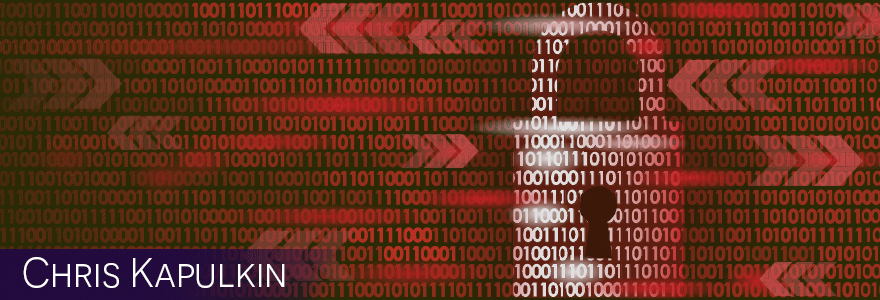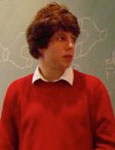Chris Kapulkin

 Funny-man Chris Kapulkin brings together elements of stand-up comedy and homomorphic encryption in his daily activities at Western’s Department of Mathematics. While perhaps not a duo as well-entrenched as fish and chips, he certainly makes it work. “When I started teaching, I realized that too much intense math is a recipe for students to zone out. Adding humour to my lessons helped hold the interest of the room a bit longer,” he laughs. Evidently, Kapulkin’s sense of humour was more than enough to hold the attention of a lecture room – if you’re lucky, you can actually catch him performing stand-up at comedy clubs around Southern Ontario.
Funny-man Chris Kapulkin brings together elements of stand-up comedy and homomorphic encryption in his daily activities at Western’s Department of Mathematics. While perhaps not a duo as well-entrenched as fish and chips, he certainly makes it work. “When I started teaching, I realized that too much intense math is a recipe for students to zone out. Adding humour to my lessons helped hold the interest of the room a bit longer,” he laughs. Evidently, Kapulkin’s sense of humour was more than enough to hold the attention of a lecture room – if you’re lucky, you can actually catch him performing stand-up at comedy clubs around Southern Ontario.
“It’s not all fun and games though,” smirks Kapulkin. His work on homomorphic encryption and homotopy theory involves making sense of vast sets of data. “If you think of a very simple plot, you can have a point that falls along an x-axis and a y-axis. That’s easy to visualize. But what about if you’re measuring the medical health of an entire population? Then you have millions of data points and dozens of axes,” he explains. Being able to visualize such clouds of information is crucial for recognizing patterns. “Data lives in thousands of dimensions!” exclaims Kapulkin. “From an Excel sheet, you would never be able to wrap your head around the data, let alone recognize the stories they tell through patterns.”
Being able to recognize shapes from bare numbers has real-world applications that affect everyone. Driven by these uses of advanced mathematics, Kapulkin’s group has applied their work to create secure online elections as well as ensuring the accuracy of software underpinning crucial daily activities like banking and air traffic control.
In a related example, researchers used homotopy theory to identify a novel type of cancer from patients reporting symptoms slightly out of line with a pre-existing dataset. Using math to diagnose cancer may not seem intuitive but with computational power skyrocketing, our ability to process massive datasets is improving.
Kapulkin is also looking to apply the fundamentals of his work to encrypting valuable datasets, like information gathered by governments or large corporations. “It’s a zillion dollar question – how can we analyze the data without actually seeing it? This is essential to maintain privacy and security,” he explains.
The downtime during this pandemic has inspired Kapulkin to beef up his written comedic material for use once the comedy clubs reopen. And just like his stand-up, his lectures this semester have been all been delivered from a virtual stage to an attentive audience who clearly appreciate the content and its delivery.

